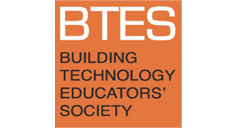Assessment of Deep Façade Retrofit Solutions for Housing
Abstract
Knowledge and research tying the environmental impact to operating energy efficiency improvement is a largely unexplored area in higher performance retrofit projects. It is a challenge to choose the façade renovation option that represents the optimal trade-offs among different performance objectives. This paper aims to test a multi-objective envelope optimization method to quantify and compare the deep retrofit façade techniques and their induced environmental impact. An integrated life cycle energy (LCE), life cycle assessment (LCA) and thermal comfort model (TCM) framework is proposed and used. Seven building façade retrofit options were studied to evaluate the operating energy saving, embodied energy increase and potential environmental impact. This project aims to better understand the pros and cons and trade-offs of different façade renovation options. The analysis results shows three findings: (a) the building construction method and the materials play equally important roles in the environmental impact; (b) the life cycle approach highlights the fact that energy saving alone is not sufficient when comparing different façade renovation technologies; and (c) for most renovation options, meeting thermal comfort requirements without mechanical cooling is more problematic than meeting them without heating. In addition, we noted that the tested integrated multi-objective optimization method can be applied to the renovation of other building systems, and the analysis results provide decision makers with the most comprehensive information.
Keywords: façade retrofit, house, life cycle assessment
How to Cite:
Hu, M., (2021) “Assessment of Deep Façade Retrofit Solutions for Housing”, Building Technology Educators’ Society 2021(1). doi: https://doi.org/10.7275/0rs1-pz07
Downloads:
Download PDF
488 Views
273 Downloads

